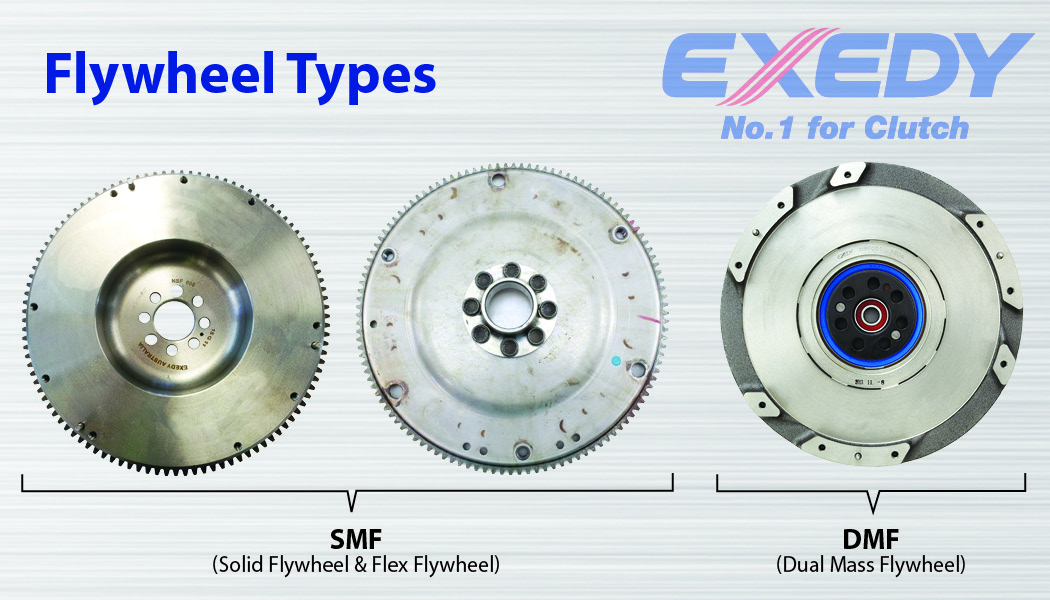
Why is dampening required within the clutch and flywheel system?
Due to its inherent design, an automobile engine is subject to rotating fluctuations. Such fluctuations are caused by explosive combustion of the fuel and by imbalances in the crankshaft and other inertial components. Variation in engine revolution is one of the leading causes of noise and vibration problems in the drivetrain.
To prevent such noise, the NVH is absorbed by a clutch damper function which suppresses the movement of the free, spinning gears and attenuates the vibration transmitted to the transmission. The clutch damper function is provided by a series of springs located between the flywheel and the transmission. By using a spring with the appropriate rigidity, the engine vibration is prevented from being transmitted to the transmission.
EXEDY employs the latest noise and vibration analysis technology to develop clutch dampers that ensure quiet and comfortable driving. What's more, our damper systems also limit the possibility of mechanical damage by reducing shock loading through the driveline.
Dual Mass & Single Mass Flywheels

What is a Dual Mass Flywheel?
The Dual Mass Flywheel (DMF) derives its name from the two main components (masses) that operate independently of each other. The primary component is fitted with a ring gear and sensor ring (if applicable) and is attached to the crankshaft. This primary component usually incorporates a dampening mechanism made up of torsion springs and friction washers that are ideally suited to absorb torsional vibrations within the drivetrain. The clutch unit is then bolted onto the secondary component. Simply, a DMF is a damper for your drivetrain. Why does a DMF fail? A DMF can fail for a number of reasons, the most common cause will be wear and tear. Like any other component on a vehicle, the DMF will wear out over time. Other causes of failure may relate to driving technique, overloading the drivetrain when towing or increasing the engine torque to a point where it exceeds the capacity of the flywheel.
Does the DMF needs replacing? DMF specifications vary between different manufacturers and as such, there is no single test that indicates whether the DMF has reached the end of its service life. There are however some generic tell-tale signs that indicate to the installer that the DMF should be replaced such as grease/oil leaks or noisy operation. The best and safest option is to replace the DMF each time the clutch is replaced. It is important that you do not grind, machine or attempt to repair a DMF. These actions are fraught with danger as it is not possible to machine or grind the flywheel surface accurately without
Why does a DMF fail?
A DMF can fail for a number of reasons, the most common cause will be wear and tear. Like any other component on a vehicle, the DMF will wear out over time. Other causes of failure may relate to driving technique, overloading the drivetrain when towing or increasing the engine torque to a point where it exceeds the capacity of the flywheel.
Does the DMF needs replacing?
DMF specifications vary between different manufacturers and
as such, there is no single test that indicates whether the DMF has reached the end of its service life. There are however some generic tell-tale signs that indicate to the installer that the DMF should be replaced such as grease/oil leaks or noisy operation. The best and safest option is to replace the DMF each time the clutch is replaced. It is important that you do not grind, machine or attempt to repair a DMF. These actions are fraught with danger as it is not possible to machine or grind the flywheel surface accurately without removing the secondary component from the primary mass. Attempting to machine or rebuild a worn DMF will usually result in the premature failure of not only the flywheel but the clutch as well.
What are the options when it comes to replacing the DMF?
The replacement of a worn DMF system with another DMF package is an obvious option. However, the cost of this option is sometimes prohibitive. EXEDY has developed a range of Single Mass Flywheels (SMF) which are sold together with the cover, disc and release bearing or CSC to replace the DMF system. The main advantage of an SMF package is the price – they are generally cheaper to purchase. As the SMF has no moving components, they can be machined and re-installed into the vehicle when a new clutch is fitted, reducing the future maintenance cost of the clutch. The SMF is extremely robust and are the preferred choice for racing or commercial applications. While the SMF system is a popular choice, it’s important to note that despite the durability and price advantages, the SMF systems do not possess the same dampening characteristics as a DMF and may not sound or feel like the DMF system that is being replaced.
EXEDY is dedicated to the development of the best drivetrain dampers and stocks a wide range of DMF and SMF clutches. Please visit www.exedy.com.au for further details.